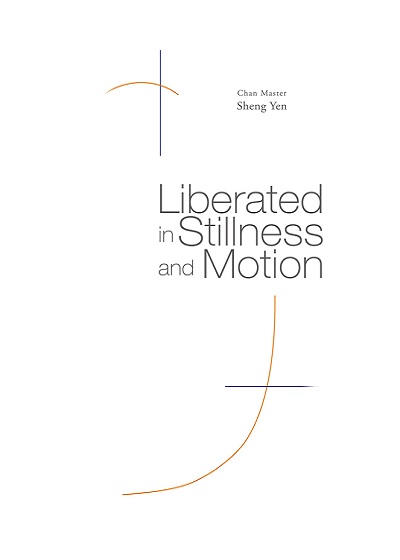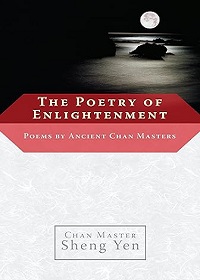Content Summary
Live a life of ease and freedom, on the basis of peace and solidity,
with the principle of being less agitated and affected.
Many masters in the history of Chinese Chan Buddhism emphasized practice as daily living. Whether monastic or lay, a follower uses the concepts and methods of Chan in daily life. By doing so, one experiences calmness and ease while being spontaneous and lively amidst mundane reality. Chan is not a religion, not a philosophy, and surely not mysterious or weird sorcery. It is the wisdom of living, the cultivation of body and mind, and a principle and guideline for spiritual development. It is also the best method for influencing and purifying the environment.
–Master Sheng Yen
About the Author
Master Sheng Yen (1930-2009)
Master Sheng Yen was born in 1930 and became a monk in 1943. He conducted a six-year solitary retreat, after which he went to Japan for further study and obtained a doctorate in Buddhist literature at Rissho University. In 1975, he began sharing the Dharma in the US, and in 1989, founded the Dharma Drum Mountain organization. In 2005, he established the Dharma Drum Lineage of Chan Buddhism, as an effort to reinvent Chinese Buddhism.
He authored more than 100 publications in Chinese, English, and Japanese, and received the Sun Yat-sen Art and Literary Award, the Sun Yat-sen Academic Award, and the Presidential Cultural Award, among other honorary awards.
He proposed the vision of “uplifting the character of humanity and building a pure land on earth,” founded the Chung-Hwa Institute of Buddhist Studies, Dharma Drum Institute of Liberal Arts, and Dharma Drum Sangha University. Experienced in Chan using correct approaches, he guided practice in both the West and East. Popularizing the Dharma in modern language, the Master initiated movements including Protecting the Spiritual Environment, Four Kinds of Environmentalism, the Fivefold Spiritual Renaissance Campaign, and the Six Ethics of the Mind. He shared the Dharma globally with a broadminded perspective, winning him worldwide recognition.
Table of Contents
Preface vii
Enlightenment and the Practice of Chan 1
Chan Studies and the Correct Buddhist Teachings 15
The Methods of Practice of Chan and Pure Land 23
Chan and Mental Health 33
Chan and Modern Life 43
Chan and Spiritual Environmentalism 53
Chan Practice and the Environmental Life 65
Religion, Chan, Buddhadharma and “Evil Demons” 69
No-Self and True-Self 71
No Rise of Wandering Thoughts, No Rejection of Phenomena 83
Wandering Thoughts, Scattered Thoughts, and Mindfulness 87
Awakening to the Mind and Seeing the Nature 93
Mind in Buddhism and Chan 101
Ordinary Mind 111
The Mind is Like the Sun Shining in Empty Space 119
Zero Faults 131
From Existence to Emptiness and from Emptiness to Existence 137
The Power and Function of Group Practice 143
The Attitude for Practicing Chan 147
Chan for Ordinary People 155
The Principle of Chan Meditation Practice 163
Featured Content
Chan is Buddhism
The establishment of Buddhism stems from meditation practice (Skt. dhyana; Chn. chan), and there are two sayings that convey this idea: “From meditation comes doctrine” (Chn. “Congchan chujiao”), and “Using doctrine to awaken to the mind” (Chn. “Jiejiao wuzong”).
Using doctrine to awaken to the mind means using the methods and concepts from the teachings to guide one’s practice and to attain enlightenment. Without the concepts and methods there would be no focal point where one could exert one’s effort in the practice. Before reaching buddhahood the Buddha learned and experienced many practice methods and eventually attained enlightenment. Afterwards he began to teach. The Buddha once said that during a time when there is Buddhadharma, one must follow the Buddhist teachings and the methods to attain enlightenment. If someone suggests that he can become enlightened without Buddhadharma yet claims to be Buddhist—even boasts of being an enlightened Buddha—neither is he a true Buddhist nor is his belief genuine Buddhism. Such people can only be practitioners of outer-path Buddhism. A genuine Buddhist would surely use the Buddhist scriptures, concepts, and methods as the basis for practice.
The Fundamental Principle of Buddhism
Some religions proclaim they are Buddhist but in fact stray from Buddhist principles and beliefs while developing concepts that are not Buddhist. Meanwhile, if one only talks about Buddhadharma, studies, and quotes from the scriptures, but lacks the actual foundation and experience of meditation practice, then they are merely counting other people’s treasures. To determine if one is in accordance with Buddhadharma, one should apply the teaching of the Three Dharma Seals which states:
The contents of the mind are constantly changing.
All physiological, physical, natural, and social phenomena as well as mental phenomena, lack an unchanging, permanent self.
The transcendental state of being unmoving and empty; the fundamental basis of the universe and human life. “Empty” refers to the constant change of all phenomena due to the workings of myriad causes and conditions. Amidst constant change, only emptiness is forever unchanging. Therefore, nirvana is neither arising nor ceasing, neither pure nor impure, neither accumulating nor diminishing, and it is still and unmoving.
The Orthodox Great Religion
An orthodox religion should meet three requirements:
Since the beginning of history, many religions have risen and fallen. Some were limited to certain areas and periods of time, and some came and went and failed to last very long. Some religions rose with the founder and perished once the founder passed away. A religion that cannot withstand the tests of time and space cannot be considered a great religion as such.
The methods and teachings should endure the passage of time, yet always be able to refresh themselves with new concepts and methods while not deviating from their basic principles.
At any time or location, a great religion should accord with the moral standards of the time and place. A healthy spirit for religion includes the qualities of being humanistic, humane, and rational in the secular realm, and transcendental in the religious realm. The quality of transcendence includes forgiveness, tolerance and non-attachment.
What is the Correct Buddhist Teaching?
It emphasizes sincere mutual care between people, but is not based on emotions nor involved in distinctions of right or wrong, gratitude and resentment, or influenced by personal feelings.
One contributes to and cares for society endlessly, but would not expect any reward for one’s efforts.
In order to help those in need, one should be involved in every aspect of society but unattached to it.





